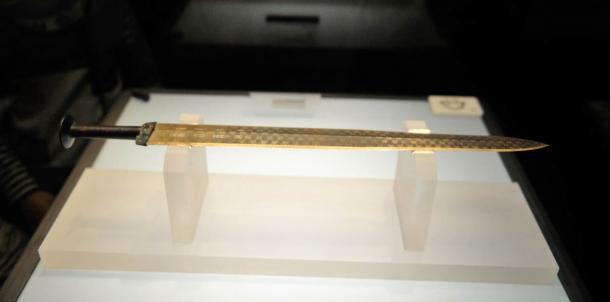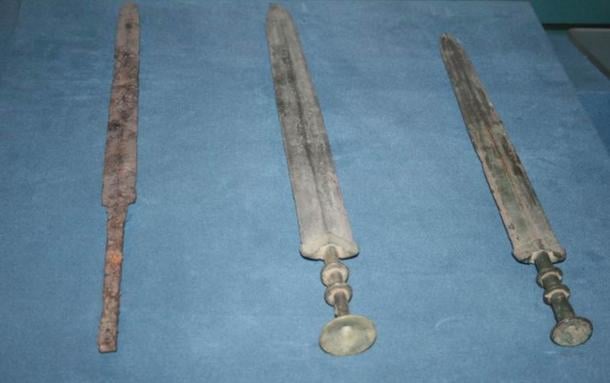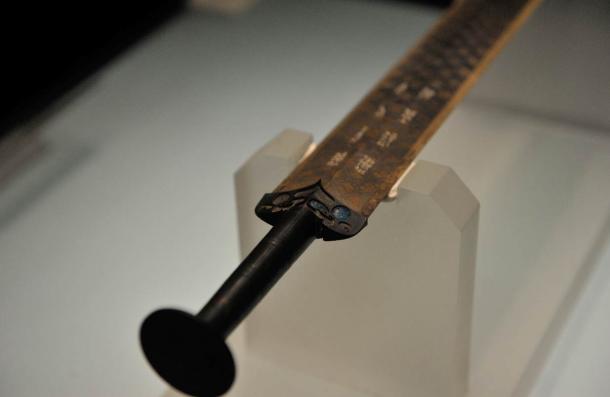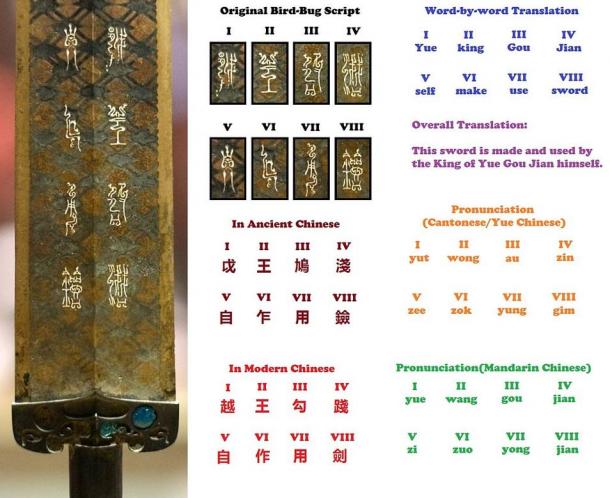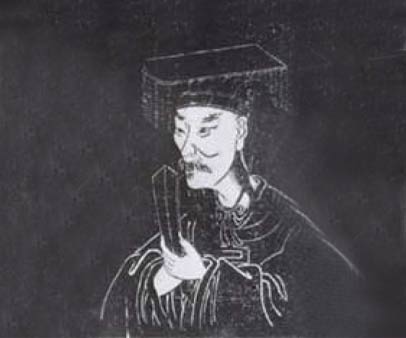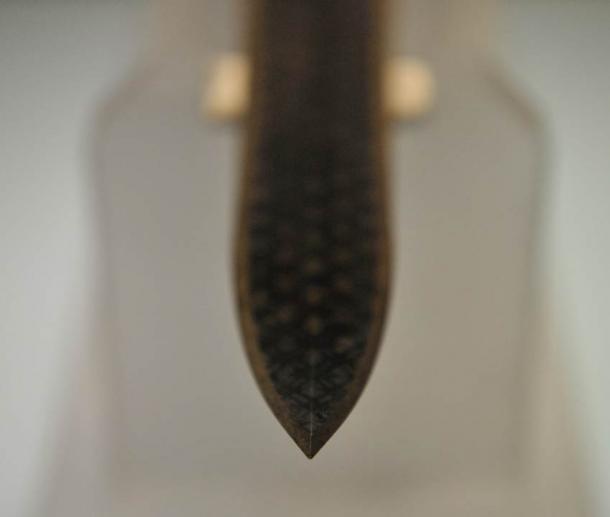... Continued...
Deciphering the inscription
On one side of the blade, two columns of text are visible with eight characters, near the hilt, that are in ancient Chinese script. The script, known as "鸟虫文" (literally "'birds and worms' characters") is characterized by intricate decorations to the defining strokes, and is a variant of zhuan that is very difficult to read. Initial analyses deciphered six of these eight characters. They read, "越王" (King of Yue) and "自作用剑" ("made this sword for (his) personal use"). The remaining two characters are likely the name of the king.
Deciphering the scripts on the Sword of Goujian ( )
From its birth in 510 BC to its demise at the hands of Chu in 334 BC, nine kings ruled Yue, including Goujian, Lu Cheng, Bu Shou, and Zhu Gou, among others. The identity of the king that owned the sword sparked debate among archaeologists and Chinese language scholar. After more than two months, the experts formed a consensus that the original owner of the sword was Goujian (496 – 465 BC), making the sword around 2,500 years old.
King Goujian of Yue ( )
Goujian was a famous emperor in Chinese history who reigned over the Yue State during the Spring and Autumn Period (771 - 476 BC). This was a time marked by chaos within the Zhou Dynasty and takes its name from the
Spring and Autumn Annals, which chronicled this period. The Spring and Autumn Period was renowned for military expeditions; these conflicts led to the perfecting of weapons to the point that they were incredibly resistant and deadly, taking years to forge and lasting for centuries. The story of Goujian and Fuchai, King of the Wu state, contending for hegemony is famous throughout China. Although Goujian’s kingdom was initially defeated by the State of Wu, Goujian would lead his army to victory 10 years later.
Unique properties
Besides its historic value, many scholars have wondered how this sword could have remained rust-free in a humid environment, for more than 2,000 years, and how the delicate decorations were carved into the sword. The sword of Goujian is still as sharp today as when it was originally crafted, and not a single spot of rust can be found on the body today.
The Goujian sword is as sharp today as it was over two millennia ago ( )
Researchers analyzed ancient bronze shards in the hope of finding a way to replicate the technology used to create the sword. They found that the sword is resistant to oxidation as a result of sulphation on the surface of the sword. This, combined with an air-tight scabbard, allowed the legendary sword to be found in such pristine condition.
Tests also show that the sword-smiths of the Wu and Yue regions in Southern China during the Spring and Autumn Period reached such a high level of metallurgy that they were able to incorporate rust-proof alloys into their blades, helping them survive the ages relatively unblemished.
Sword Damaged
In 1994, the Sword of Goujian was loaned for display in Singapore. As a workman was removing the sword from its case at the conclusion of the exhibition, he knocked the weapon, causing a 7mm-long crack. The damage caused uproar in China and it was never allowed outside the country again. It is now kept at the Hubei Provincial Museum.

